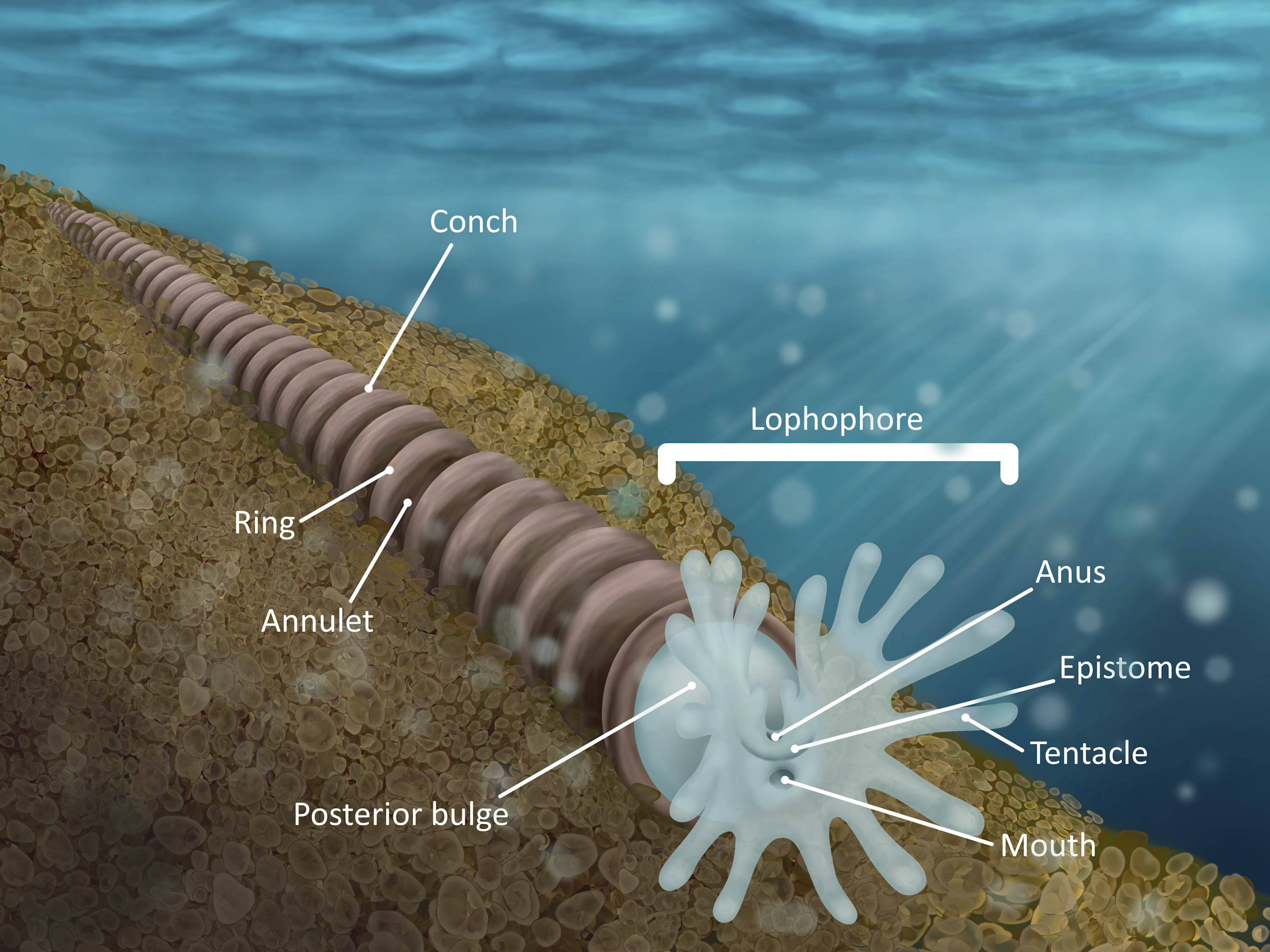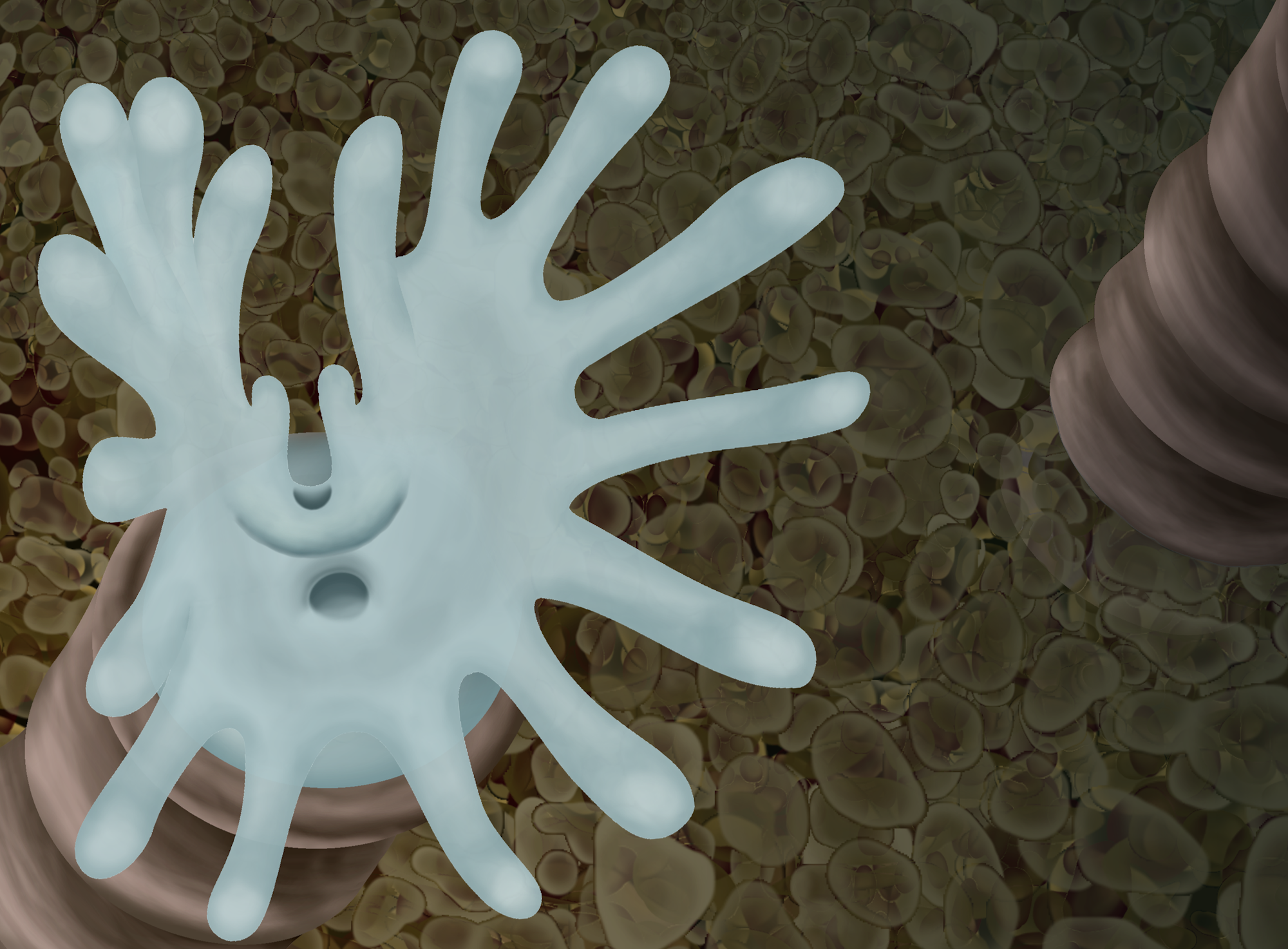
Tentaculitids were Lophophorates, like Brachiopods, Bivalves, Hyolithids, Bryozoans, and Phoronids (2). This meant that they filtered plankton with a lophophore, a looping, many tentacled cephalic organ. Tentaculitids lived from the middle Cambrian to the Late Jurassic, in the past being associated with annelid worms, but being ascribed to the Lophophorates due to their shell microstructure (2).
Tentaculitids found at Seven Stars
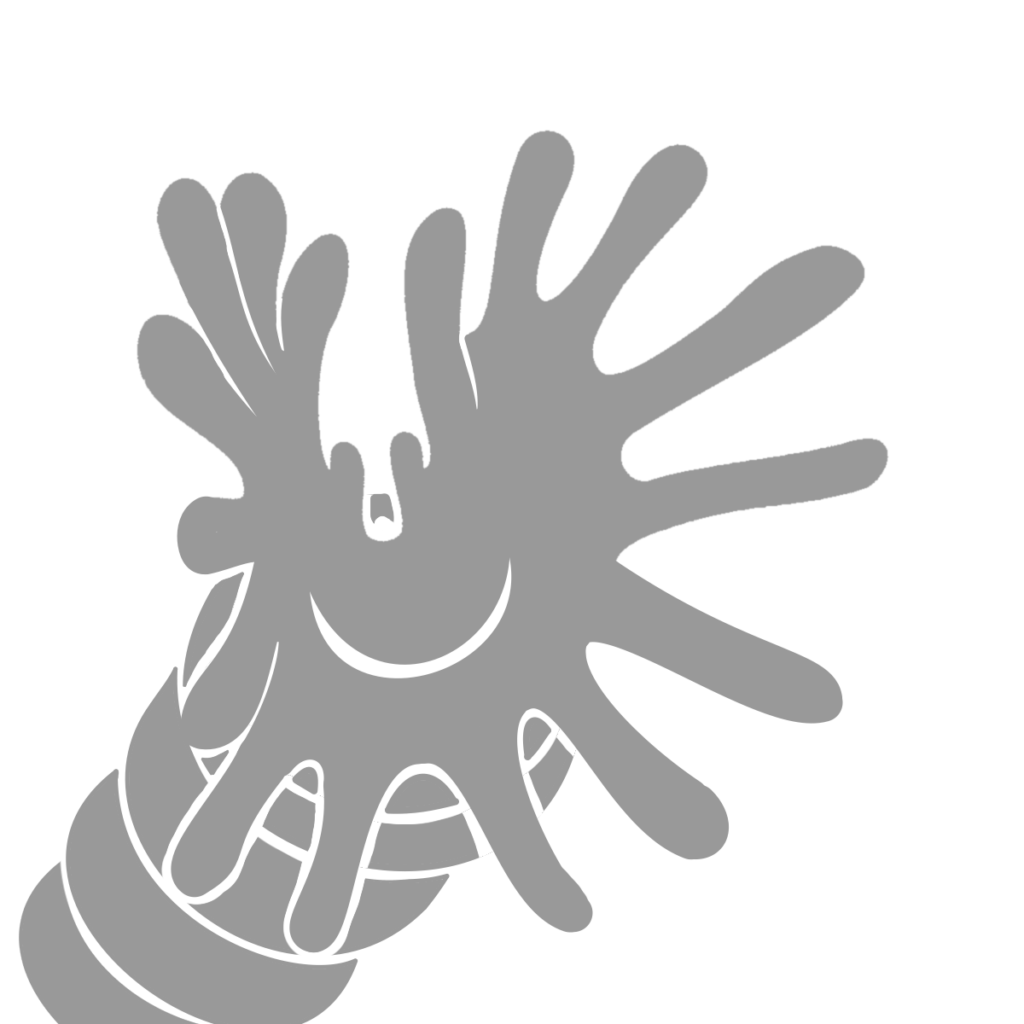
Tentaculites bellulus
UNCOMMON
How do I identify Tentaculitids?
Tentaculites fossils, though not rare, are easy to confuse with some other fossil groups found at Seven Stars. Crinoid stems and straight shelled Cephalopods both have a similarly segmented appearance; however, Crinoid stems are more bulbous than Tentaculites and do not taper. While Cephalopods taper, they do not have the same ridged texture. Additionally, Tentaculites is often much smaller than many Cephalopods, and some Crinoid stems. They can preserve in a number of different ways. The most striking is the “fire” Tentaculites, which is a pyritized external mold of the original shell. Due to the larger parts of the shell cracking away first and exposing the pyrite, the larger parts of the shell are darker and the smaller parts are lighter. Other ways Tentaculites can be preserved include non-pyritized external molds, ridged internal molds, and rarely, original shells (See Figure 1).

What were Tentaculitids?
Tentaculitids were soft-bodied organisms that grew hard shells, called conchs, around themselves for protection (3). These conchs are usually the only remains we have of the Tentaculitids, and for a long time, they presented a mystery to taxonomists (4). In the past, Tentaculitids have been classified as Cnidarians (coral), sponges, annelid worms, Bryozoans, Brachiopods, and Phoronid worms (2).
The Tentaculitid conch started growth with a bulbous initial chamber. As the shell continued growth, septa, not unlike those of Cephalopods, but without a siphuncle, walled off earlier parts of the shell (3). The shell was ornamented by numerous closely-spaced “rings”, circular ridges not only apparent on the external surface of the shell, but also leaving grooves on the internal surface, too. The spaces in between the rings are called annulets, and retain a ribbed texture (3). The entire shell was calcitic, and had a fibrous prismatic structure (2).
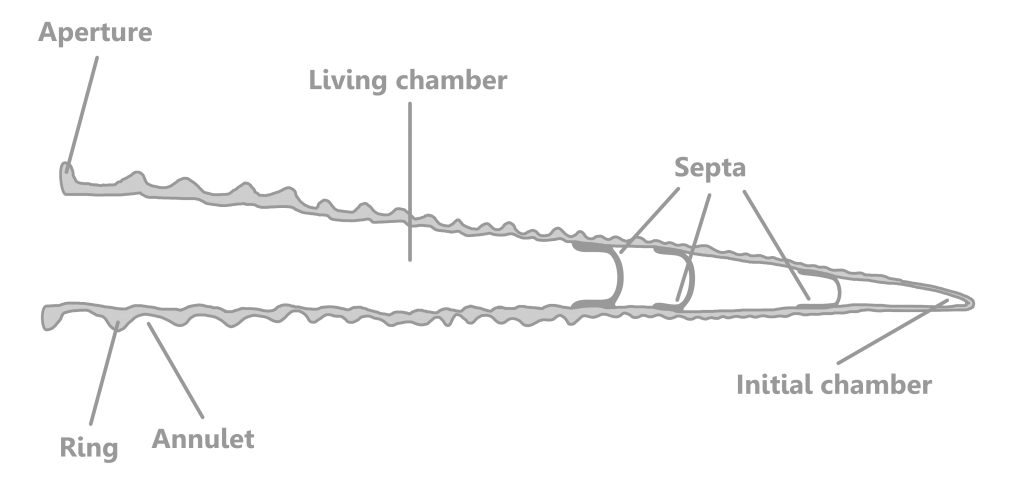
Tentaculitids, as mentioned above, have been attributed to many different taxonomic groups in the past, such as Cnidarians, sponges, Annelids, Mollusks, and various Lophophorates. The most generally accepted theory today was suggested by Vinn & Michał Zatoń, (2012). They summarized the arguments of other previous authors and used Similarity analysis to find the most likely taxonomic placement of Tentaculita. Some of their main points are summarized below.
Because of muscle attachment scars found in some Tentaculitids (none of which are found at Seven Stars), the group is known to have been bilaterally symmetrical, lacking radial symmetry. Similar muscle scars are seen in both Lophophorates such as Brachiopods, and Mollusks. The calcitic fibrous prismatic structure of the Tentaculitid conch is similar to both Brachiopods and Mollusks, more so than to Bryozoans (2).
Brachiopods have similar larval shells, muscle attachments, and biomineralization to the Tentaculitids. It has also been suggested that Phoronid worms, sharing the group Brachiozoa with the Brachiopods, were close relatives of the Tentaculitids. Phoronids have lamellar tubes constructed out of mucus and a similar body shape to the Tentaculitids. Some authors suggest that mineralized shells were the ancestral state for the Brachiozoa; in this case, Tentaculitids may represent more primitive, mineralized Phoronids. While Bryozoans have somewhat similar mineralization to the Tentaculitids, it was not as marked as the similarities with Brachiozoans. While the molluscan shell structure is similar to that of Tentaculitids, it was made of aragonite, a different kind of calcium carbonate than found in both Tentaculitids and Brachiozoans (2) .
Tentaculitids reproduced asexually, through the process of budding. A single tube could branch into two to multiply the number of organisms present. This is strong evidence against a molluscan placement of Tentaculita, because Mollusks do not reproduce in this way. On the other hand, all other groups that Tentaculitids have been compared to have taxa that do (2).
Wei, Zong, and Wong (2012) concluded that there was strong evidence for a Brachiozoan affinity for Tentaculitids, that there was fair but insufficient evidence for a molluscan affinity, even less evidence for a close relationship with Bryozoans, and none for all other groups that were tested. They pointed out how Tentaculitids fit well with the theory that the Brachiozoa were ancestrally mineralized, possibly even suggesting a Phoronid taxonomy (2) (See Figure 3).
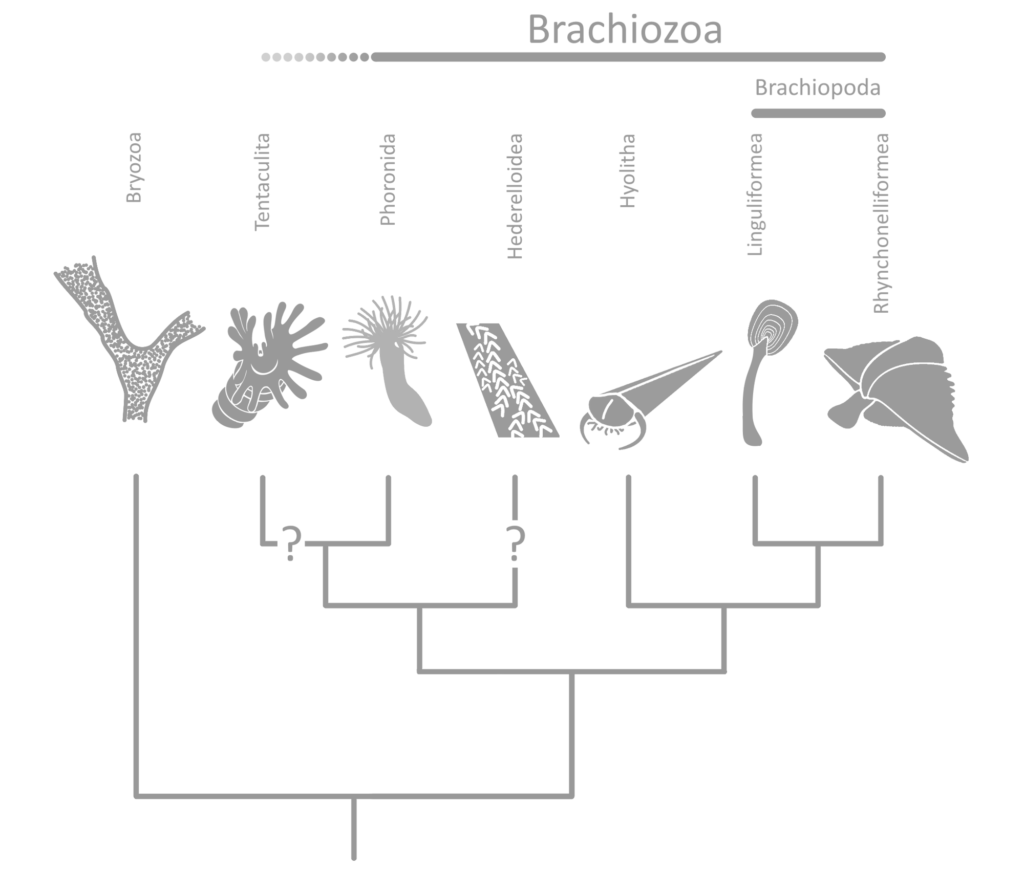
Read more about Lophophorates from Seven Stars with the links below:
Brachiopods Hyolithids Bryozoans (this post has not yet been released)
To complicate the matter, in 1979, Fritz Kutscher published a short paper about some dacryoconarids (close relatives of Tentaculitids) he found in the Early Devonian Hunsrück Slate in Germany. After viewing some of the fossils under an x-ray, he discovered that some of the soft tissue had been preserved (4). Since numerous tentacles were found near the aperture of the the shells he inspected, and because the specimen bore a purported phragmocone, he affirmed the suggestions of previous authors that Tentaculita fit inside of molluska, near or within cephalopoda (5). In addition, he held with previous authors that tentaculitids were pelegic (4).
The findings from the Hunsrück Slate actually fit well with the more modern placement of Tentaculita within Lophophorata, as all lophophorates have a tentacled lophophore. Kutscher used what he interpreted as a phragmocone to place Tentaculita within cephalopoda, citing both septa and a siphuncle, which are defining features of cephalopods. However, Larsson (1979) pointed out that Dacryoconarids do not bear septa, even as juveniles, and without septa, there cannot be a siphuncle (5). Kutscher also noted what he thought represented operculi near the Dacryoconarids (4), but if they were cephalopods, why an operculum would be detached while the arm crown was not be was not explored. The “operculi” likely represent remains from other fossil organisms. In the Cephalopoda post, we explore the complexity of the argument for Paleozoic cephalopod operculi, which seem to fit better with rudimentary jaw apparatuses.
Traditionally, Tentaculites and its closest relatives have been seen as planktonic, floating or even actively swimming. In fact, some Brachiopods will swim with their lophophores, as well as feeding with them; perhaps Tentaculites did, too (2). At some sites, Tentaculites fossils make up most of the rock surface, possibly because they were washed from the water column in a catastrophic event; similar patterns are seen in fossilized pelagic belemnites. However, the mutual agreement among Paleontologists seems to be that Tentaculitids lived partially buried in the substrate, with their aperture and lophophore exposed to the water column. Evidence for this is the encrustation of the top of Tentaculitid shells, where the aperture could be colonized by encrusting organisms. In addition, some Tentaculitid fossils have been found in a vertical, apex-up, position, with reason to believe that they were not moved. In many settings, hosts of Tentaculites have been preserved in turbid environments where many individuals were washed into a horizontal orientation, with smaller individuals washed inside the shells of larger ones (5). Tentaculitids, according to some authors, decrease in number the more terrestrial sediment there is in a depositional environment (5), which fits with their small presence at Seven Stars, the depositional environment of which was dominated by terrestrial sediment based from the Acadian Highlands.
Note: This slider shows Tentaculites in a horizontal orientation, which was not its natural position.
Tentaculitids at Seven Stars
Only one species of Tentaculitid has been identified from Seven Stars, but it made up for its singularity with size, growing to almost ten times the size of its relatives from equivalent sites.
Tentaculites bellulus
Tentaculites bellulus is the only Tentaculitid in the area that has rings of mostly equal size and distance from one another, without alternating smaller and larger rings or secreting them at somewhat random distances from each other (1). Ranging in size from 5 mm to over 5 cm (at least at Seven Stars), this species is by far the largest in the Tully Fauna and much larger than most Tentaculites in general.

Works cited
(1) Wilson, K. A. (2014). Field guide to the Devonian fossils of New York (3rd ed.). Paleontological Research Institution.
(2) Vinn, O., & Zatoń, M. (2012). Phenetic phylogenetics of tentaculitoids – extinct, problematic calcareous tube-forming organisms. GFF, 134(2), 145–156. https://doi.org/10.1080/11035897.2012.669788. https://www.academia.edu/4946098/Phenetic_phylogenetics_of_tentaculitoids_extinct_problematic_calcareous_tube_forming_organisms
(3) Fan, Wei & Zong, Rui-Wen & Gong, Yiming. (2019). Tentaculitids and their evolutionary significance in the Early Devonian Dashatian section, South China. Palaeobiodiversity and Palaeoenvironments. 99. 10.1007/s12549-018-0367-7.https://www.academia.edu/90489663/Tentaculitids_and_their_evolutionary_significance_in_the_Early_Devonian_Dashatian_section_South_China
(4) Kutscher, Fritz. (1979). Beiträge Zur Sedimentation Und Fossilführung Des Hunsrückschiefers 52. Viriatellina Fuchsi (KUTSCHER) Im Hunsrückschiefer von Gemünden Und Bundenbach. Jahrbücher des Nassauischen Vereins für Naturkunde.
https://www.zobodat.at/pdf/Jahrbuch-Nassauischen-Verein-Naturkunde_104_0212-0218.pdf
(5) Larsson, K. 1979 OS 10: Silurian tentaculitids from Gotland and Scania. Fossils and Strata, No. Il, pp.1-180. Oslo. ISSN 0300-9491. ISBN 82-00-09483-9.
https://www.idunn.no/doi/epdf/10.18261/8200094839-1979-01
These resources were used in the reconstruction of the Tentaculitids in this post, but were not referenced in the text.
Temereva, Elena & Malakhov, Vladimir. (2015). Metamorphic remodeling of morphology and the body cavity in Phoronopsis harmeri (Lophotrochozoa, Phoronida): the evolution of the phoronid body plan and life cycle. BMC Evolutionary Biology. 15. 10.1186/s12862-015-0504-0. https://www.researchgate.net/publication/283044298_Metamorphic_remodeling_of_morphology_and_the_body_cavity_in_Phoronopsis_harmeri_Lophotrochozoa_Phoronida_the_evolution_of_the_phoronid_body_plan_and_life_cycle
Temereva, E.N. Innervation of the lophophore suggests that the phoronid Phoronis ovalis is a link between phoronids and bryozoans. Sci Rep 7, 14440 (2017). https://doi.org/10.1038/s41598-017-14590-8 https://www.nature.com/articles/s41598-017-14590-8
Squires, R. L. (2024). Tentaculites. PALEO & GEO TOPICS: Comments by R. L. Squires, Accessed 2 Aug. 2023. https://rsquirespaleo.blogspot.com/2014/11/tentaculites.html

